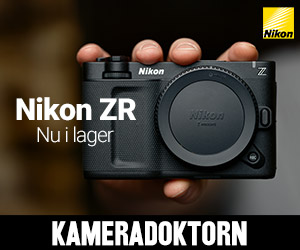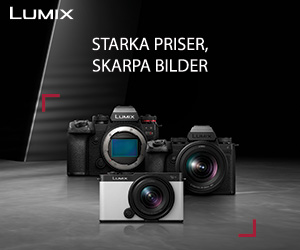Jag har i alla fall en kompis därute i cyberrymden ;-)
Hittat som kommentar på jämförelsen
http://photo.net/equipment/digital/sensorsize/
(kolla även Matt Kimes kommentar några dagar tidigare om ni går in på länken)
Achim Schumacher, October 08, 2004; 06:03 A.M.
>>In digital land we now have f2.0-2.8/7-50mm lenses, being equivalent to f2.0-2.8/28-200 for 24x26mm, with probably 30cm front lens diameter and 30kg weight.<<
I think there is a general misconception of the aperture values when comparing different sensor sizes, and Matt Kime above already gave the correct hint.
An f2.0-2.8/7-50mm lens on a small sensor is NOT equivalent to a f2.0-2.8/28-200mm lens on 35mm format! We are all used to apply a "cropping factor" to calculate the equivalent focal length, but we should do this also to the aperture value, in order to get an "equivalent f-stop". Then, the lens would be an equivalent f8.0-11.2/28-200mm lens. It's just that no manufacturer would like to name it this way.
But think about it:
1) For an equivalent depth of field, it is the actual diameter of the lens aperture that counts. Since the f-number N is defined as the focal length f divided by the aperture diameter D, we get D=f/N. If we multiply f by the crop factor, then we have to multiply N by the same factor in order for D to be constant. Take an online DoF-calculator to test yourself. If you have 2 cameras with different sensor sizes and lenses so that the Field of View is the same, then to obtain the same DoF, you need to stop down the larger camera by a factor equal to the cropping factor.
2) For the same noise level, we need the same amount of photons entering the lens. In other words, it is again the actual diameter of the lens aperture that counts. Smaller sensors show higher noise, because at the same ISO value (which is defined by the real f-value, not the equivalent f-value) and according exposure time, there is less light collected. (This assumes the underlying technique to be identical, just scaled in size, e.g. the number of pixels being identical). We see, we have to multiply the ISO value by the square of the crop factor to get an equivalent ISO! (We need the square, because the incoming light depends quadratically on the aperture diameter). We then could even use the equivalent f-number together with the equivalent ISO value in order to calculate the correct exposure, just as a valid alternative to using the real values.
CONCLUSION: if we want to compare cameras with different sensor sizes (crop factor C) but with lenses to obtain an equivalent Field of View, it is not sufficient to use the equivalent focal length (f2=f1/C), but we also have to calculate equivalent aperture values N and ISO values: N2=N1*C and ISO2=ISO1*C*C.
Now, an f8.0-11.2/28-200mm lens won't autofocus on an SLR! This is no contradiction, because the AF-system on a SLR is independent from the sensor size, and relies on the light flux coming in, which is dependent on the real, not the equivalent f-number.
To Bob's comparison: You would not want to stop down a 1/1.8" sensor camera (C=5) to f/16, because this is equivalent to f/80 on a 35mm size camera, which would also yield to an almost zero MTF, I guess.
I wonder why up to now not a single digital camera reviewer found out about this equivalent f-stops and ISOs and bases his reviews on these values. It would help compare cameras and understand the differences.
/L







